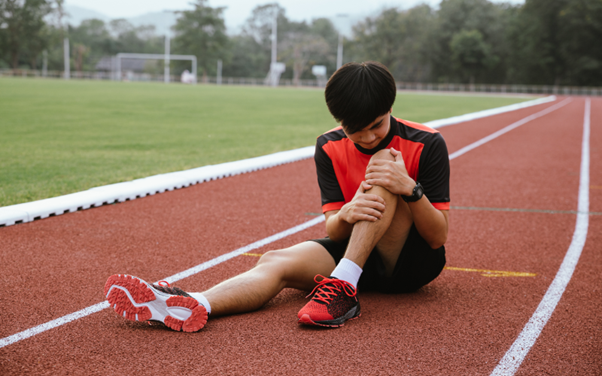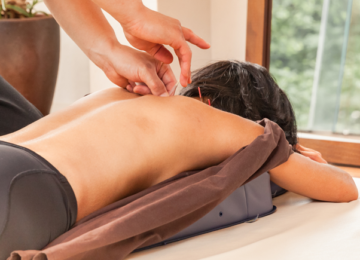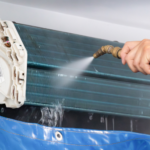Sports play a vital role in the lives of many individuals, enhancing their overall health and well-being. However, engaging in sports carries the potential for injuries, some of which may be quite serious. It is then essential for athletes and sports enthusiasts to comprehend the prevalent sports injury types and the treatment methods available.
Discover these sports injuries and learn how a sports injury doctor in Singapore can address them.
Anterior Cruciate Ligament (ACL) Tears
Overview: ACL tears are among the adverse and common sports injuries, particularly in high-impact sports like soccer, basketball, and rugby. The ACL is one of the primary ligaments stabilising the knee joint, and a tear often occurs during sudden stops or changes in direction.
Treatment: Orthopaedic surgeons typically recommend surgical intervention for ACL tears, especially for athletes. The procedure involves reconstructing the torn ligament using a graft, usually from the patient’s own hamstring or patellar tendon. A rigorous rehabilitation program post-surgery is essential to restore knee function and strength.
Meniscus Tears
Overview: The meniscus is a C-shaped piece of cartilage in the knee that acts as a shock absorber. Meniscus tears are common in sports that involve twisting movements, such as tennis and football. The symptoms include discomfort, inflammation, and restricted mobility in the knee.
Treatment: Sports orthopaedic surgeons often treat meniscus tears through arthroscopic surgery. This minimally invasive procedure allows the surgeon to either repair the tear or remove the damaged part of the meniscus. Rehabilitation following surgery focuses on regaining knee strength and mobility.
Rotator Cuff Injuries
Overview: Rotator cuff injuries affect the shoulder and are common among athletes in overhead activities like swimming, tennis, and weightlifting. These injuries can range from inflammation (tendinitis) to complete tears.
Treatment: Non-surgical treatments, such as physiotherapy and corticosteroid injections, are often sufficient for partial tears or inflammation. However, complete tears usually require surgical repair. Orthopaedic surgeons may perform arthroscopic rotator cuff repair, a minimally invasive procedure, to pave for brief recovery. Post-surgery rehabilitation is essential to restore full shoulder function.
Tennis Elbow (Lateral Epicondylitis)
Overview: Tennis elbow is a repetitive strain injury that affects the tendons in the forearm. Despite its name, it’s not limited to tennis players and can occur in anyone who performs repetitive arm movements. Symptoms include pain on the outside of the elbow, which may extend to the forearm and wrist.
Treatment: A sports orthopaedic surgeon in Singapore often starts with conservative treatments such as rest, ice, and physical therapy. Medical treatments, like platelet-rich plasma (PRP) injections or shockwave therapy, may be recommended if symptoms persist. Surgery is considered a last resort when other treatments fail, with the aim of removing damaged tissue and promoting healing.
Achilles Tendon Rupture
Overview: The Achilles tendon connects the calf muscles to the heel bone and is necessary for walking, running, and jumping. Ruptures typically occur in sports that involve sudden bursts of speed, like basketball and football. Symptoms include a sudden sharp pain in the back of the ankle and difficulty walking.
Treatment: An orthopaedic surgeon might recommend either non-surgical or surgical treatment depending on the severity of the rupture and the patient’s activity level. Non-surgical treatment involves immobilising the foot and allowing the tendon to heal naturally. Surgical treatment, typical in active individuals, involves stitching the torn ends of the tendon together. Rehabilitation aims to regain strength and enhance flexibility.
Patellar Tendinitis (Jumper’s Knee)
Overview: Patellar tendinitis, commonly known as jumper’s knee, is an overuse injury that affects the tendon connecting the kneecap to the shinbone. It is common in sports that involve frequent jumping, such as volleyball and basketball. Symptoms may manifest as discomfort and sensitivity in the area surrounding the kneecap.
Treatment: Sports injury doctors typically start with conservative treatment, including rest, ice, anti-inflammatory medications, and physical therapy. Treatments, like PRP injections or even surgery, may be considered if these measures are ineffective. The goal of surgery is to remove damaged tissue and stimulate healing.
Shoulder Dislocations
Overview: Shoulder dislocations occur when the upper arm bone pops out of the shoulder socket, often due to a fall or a direct blow in contact sports like rugby or football. This injury can cause significant pain and instability in the shoulder.
Treatment: The immediate treatment for a shoulder dislocation involves reducing the dislocation, which should only be performed by a qualified sports orthopaedic surgeon. After reduction, the patient may need to wear a sling to immobilise the shoulder. If the dislocation has caused damage to the surrounding ligaments or cartilage, surgery may be required to repair these structures. Rehabilitation is focused on restoring shoulder strength and preventing future dislocations.
Conclusion
Athletes and physically active individuals must comprehend the prevalent sports injuries and their respective treatments to ensure proper well-being. Injuries such as an ACL tear, meniscus damage, or a dislocated shoulder necessitate consultation with an orthopaedic surgeon in Singapore to ensure correct diagnosis and treatment. Timely intervention and suitable care can enhance recovery results, enabling athletes to resume their activities with assurance.
Contact Dr Bryan Tan to take the first step toward recovery and enhanced quality of life.











